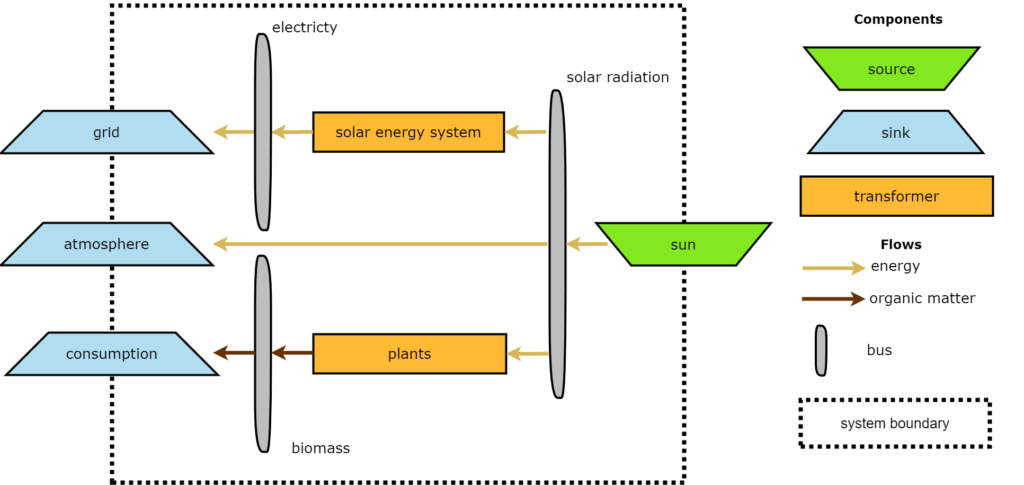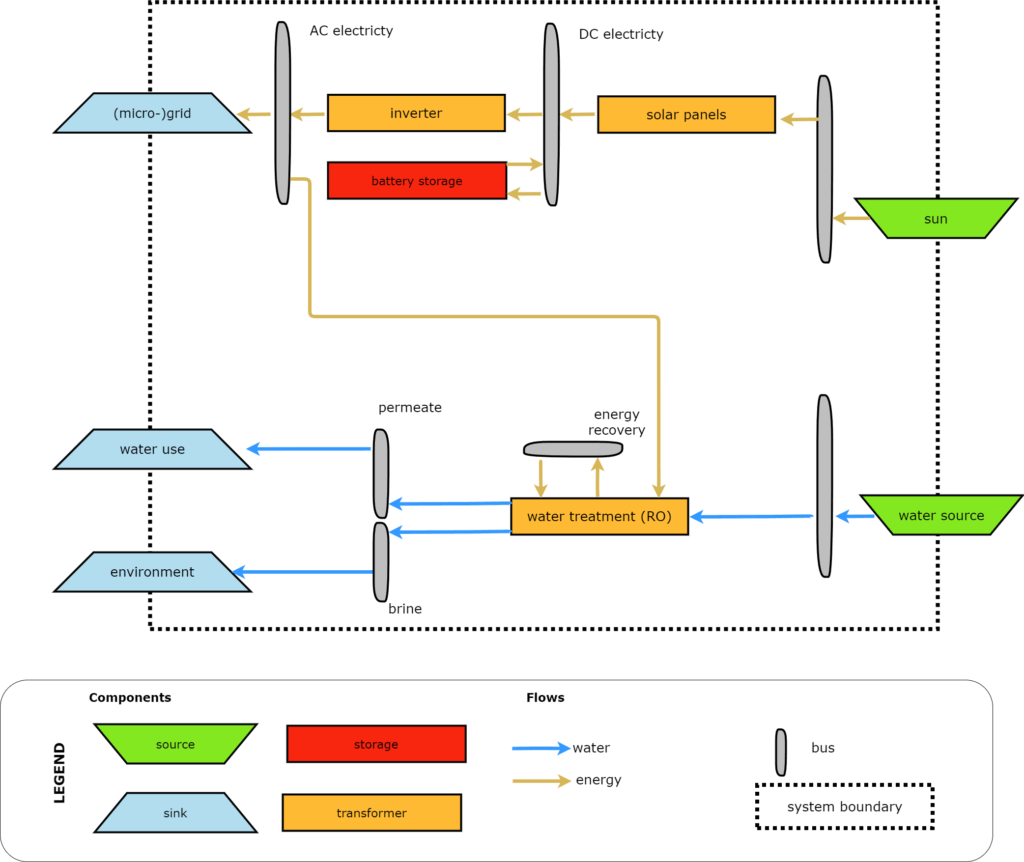As developers and users of the oemof software, we’re always interested in efforts that leverage its modular, open-source design for broader, cross-sectoral analyses. A recent paper, OWEFE, open modelling framework for integrated water, energy, food, and environment systems by J. Fleischmann et al. (2024), presents an “integrated-WEFE” layer that extends oemof’s energy system graph to encompass water, energy, food, and environmental systems in one unified model.

OWEFE builds directly on oemof’s solver and graph, reusing the different nodes of the energy system but interpreting them in a general way, so sunlight-to-electricity, sludge-to-biogas, or rainfall-to-irrigation all follow the same concept: OWEFE wraps physical or biological processes (e.g. digestion, plant growth, evapotranspiration) in standard converters (“transformers” in previous solph releases) or storages with hourly conversion factors or transfer functions; distinct modes (e.g. warm vs. cold digesters) use piecewise-linear converters or varying coefficients. Sources are defined at the resource level (solar irradiation, groundwater, rainfall), moving the system boundary to the natural environment and enabling explicit cross-sector flows.
Components can accept inputs from multiple resource sectors, capturing water, energy, food, and environmental linkages within a single LP framework. The framework also shifts the definition of a source outward: instead of a PV module, the source for electricity is the solar irradiation itself. That small conceptual move lets the model trace resource flows from the natural environment straight through to final uses and losses.

On top of these extensions, OWEFE supplies a reusable library of components. By creating a simple interaction matrix, modellers can describe cross-sector links before they write a single line of code. Two worked examples in the paper, a wastewater-to-biogas system in Lebanon and an agrivoltaics installation in southern Germany, show that the framework reproduces sector-specific results while exposing WEFE synergies, all within the linear-programming backbone users already know.
In the Tibnine wastewater-to-biogas example, the model captures influent characteristics, pumping requirements, and digester performance under varying temperatures, all within the same LP formulation. Hourly update of methane yields and heat demands allows direct comparison with on-site measurements, and grid export profiles align closely with the original study’s energy balances.
For the Heggelbach agrivoltaic installation, OWEFE jointly optimizes solar panel tilt, irrigation schedules, and crop growth dynamics, revealing trade-offs between electricity generation and biomass yield. Simulated water use efficiencies and monthly harvest curves fall within the ranges reported by the standalone analyses.
The paper is available online (doi:10.1088/2634-4505/acbcee). The code is also open-source at GitHub:rl-institut/OWEFE, so energy modellers, hydrologists, and agronomists can now build integrated scenarios without switching tool chains or sacrificing transparency.
